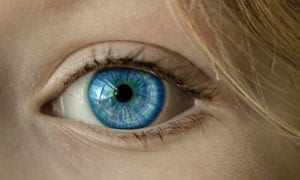Our country has an issue when it comes to screening for diabetic retinopathy. In addition to clinics lacking the necessary imaging programs, the compliance rate for diabetic retinopathy screening is low; studies showed that it was sitting just around 60% in 2018. Implementing a teleretinal imaging program at primary care facilities could provide better screening and care to patients in need. According to Retinal Physician, teleretinal imaging works by using a nonmydriatic digital retinal camera:
Typically, the images are remotely read by eye care specialists trained in retinal image interpretation [and] the reader returns a report to the PCP [within 24 hours to 48 hours]. The report consists of a preliminary diagnosis of stage of retinopathy and a recommendation for follow-up care.
Healio recently reported on a presentation from the Association for Research in Vision and Ophthalmology meeting entitled: “Evaluating the impact of the teleretinal imaging program for diabetic retinopathy screening in a majority Hispanic population at the University of New Mexico Health System.” The presentation centered on results from a retrospective study which evaluated diabetic retinopathy screening rates in primary care facilities over a 3-year period. Researchers specifically explored these rates in facilities with a teleretinal imaging program and those without. The study found that:
- From 2013 (6 years before the study) to 2022 (the end of the study), 2,001 diabetic retinopathy screenings were performed using teleretinal imaging. A slight majority of patients screened were female, and a more significant majority were Latino/Hispanic.
- In the study period (2019-22), diabetic retinopathy screenings fell by 90% (likely due to the coronavirus pandemic). The number fell by 10% (from 39 to 29%) in clinics with teleretinal imaging services, and by 14% (from 31 to 17%) in clinics without these services.
- Teleretinal imaging was able to detect the following rates: 31% (diabetic retinopathy at any stage); 7% (diabetic retinopathy that should be referred to a specialist); 20% (any ophthalmologic disease that could be referred to a specialist).
- Over the study period, primary care facilities with teleretinal imaging programs had much higher screening rates than those without.
- Patients insured by Humana had nearly 2x higher screening rates than patients with other forms of insurance.
Exploring Diabetic Retinopathy
So what exactly is diabetic retinopathy? This condition, which is a complication of diabetes, can cause vision loss and blindness. High blood sugar levels damage the retina (the light-sensitive tissue in the back of your eye. As blood vessels leading to the retina become blocked, causing bleeding and leakage, the eye tries to grow new blood vessels. These fail to grow properly and are much more prone to leakage, causing additional problems. The risk of developing diabetic retinopathy increases the longer you’ve had diabetes. If you have diabetes, it is important to have a dilated eye exam every year. This can help catch the condition in early stages.
Symptoms of diabetic retinopathy can include:
- Dark, floating spots/streaks in your vision
- Difficulty with reading or seeing at a distance
- Blurry or fluctuating vision
- Neovascular glaucoma (complication)
- Retinal detachment (complication)
- Diabetic macular edema (complication)
Treatment includes regular eye monitoring, corticosteroid or anti-VEGF injections, laser treatment, and vitrectomy.







